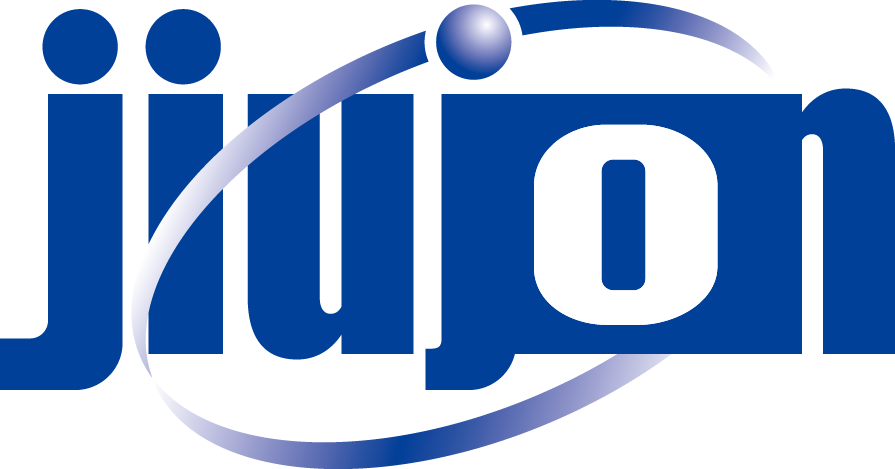Flat optics generally defined as windows, filters, mirror and prisms. Jiujon Optics not only manufacture spherical lens, but also flat optics
Jiujon flat optical components used in the UV, visible, and IR spectrums include:
| • Windows | • Filters |
| • Mirrors | • Reticles |
| • Encoder disks | • Wedges |
| • Lightpipes | • Wave plates |
Optical materials
The first and foremost item to consider is the optical material. Important factors include homogeneity, stress birefringence, and bubbles; all of these affect product quality, performance, and pricing.
Other relevant factors that can impact processing, yield, and pricing include chemical, mechanical, and thermal properties, along with the form of supply. Optical materials can vary in hardness, making manufacturability difficult and processing cycles possibly lengthy.
Surface Figure
The terms used for specifying surface figure are waves and fringes (half-wave) — but on rare occasions, surface flatness may be specified as a mechanical callout in microns (0.001 mm). It is important to distinguish the difference between two commonly used specifications: peak to valley(PV) and RMS. PV is by far the most widespread flatness specification used today. RMS is a more accurate measurement of surface flatness, as it takes into account the entire optic and calculates deviation from the ideal form. Jiujon measure optical flats surface flatness with laser interferometers at 632.8 nm.
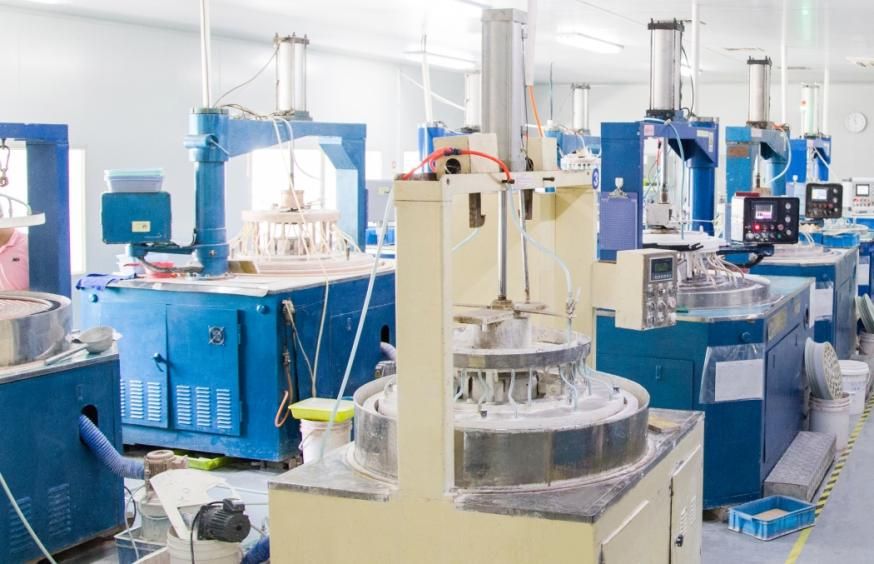
Double-sided machines
The clear aperture, also known as the usable aperture, is important. Normally optics are specified with an 85% clear aperture. For optics requiring larger clear apertures, attention must be taken during the production process to extend the performance area closer to the part’s edge, making it more difficult and costly to fabricate.
Parallel or wedged
Components such as filters, plate beamsplitters, and windows are required to be of very high parallelism, whereas prisms and wedges are intentionally wedged. For parts requiring exceptional parallelism ( Jiujon measure parallelism using a ZYGO interferometer.
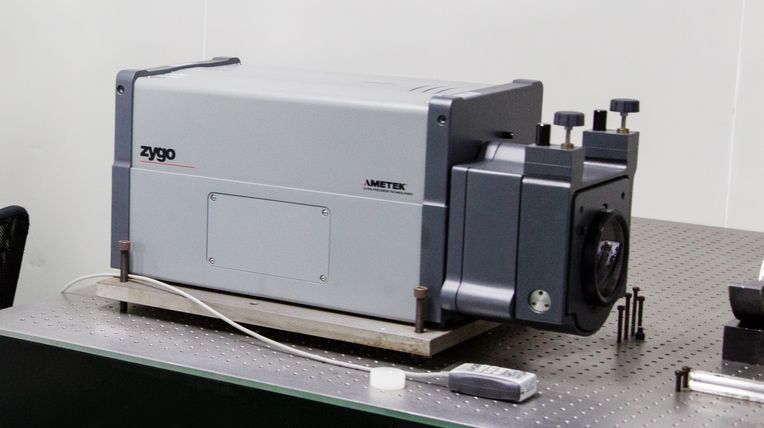
ZYGO Interferometer
Wedges and prisms require angled surfaces at demanding tolerances and are usually processed via a much slower process using pitch polishers. Pricing increases as angle tolerances become tighter. Typically, an autocollimator, goniometer, or a coordinate measurement machine is used for wedge measurements.
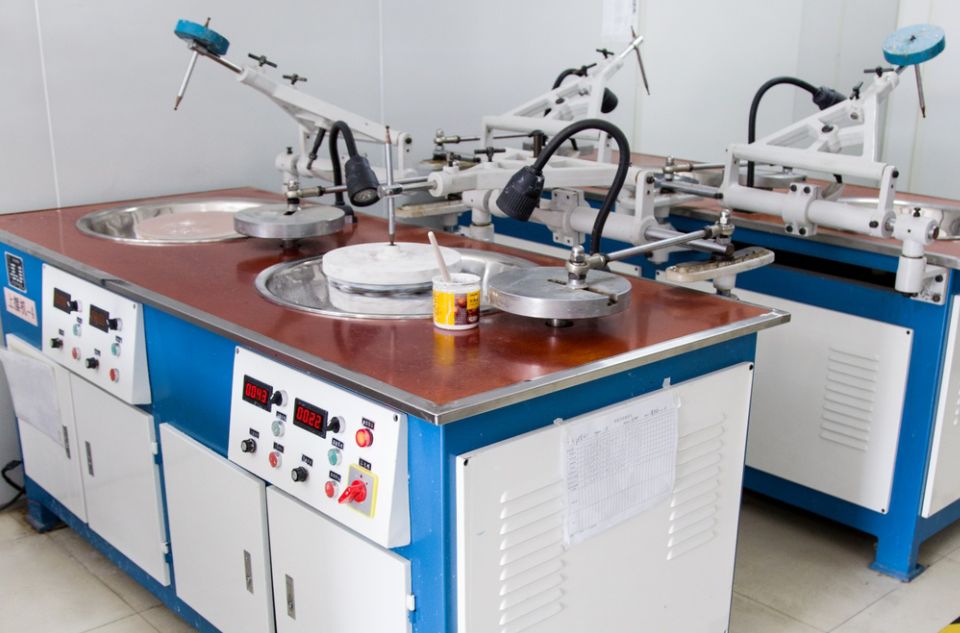
Pitch Polishers
Dimensions and tolerances
Size, in conjunction with other specifications, will dictate the best processing method, along with the size of equipment to use. Although flat optics can be any shape, round optics seem to achieve the desired specifications more quickly and uniformly. Overly tightened size tolerances can be the result of a precision fit or simply an oversight; both have an adverse effect on pricing. Bevel specifications are at times overly tightened, also resulting in increased pricing.
Surface quality
Surface quality is influenced by cosmetics, also known as scratch-dig or surface imperfections, as well as surface roughness, both with documented and universally accepted standards. In the U.S., MIL-PRF-13830B is mostly used, whereas the ISO 10110-7 standard is used throughout the world.
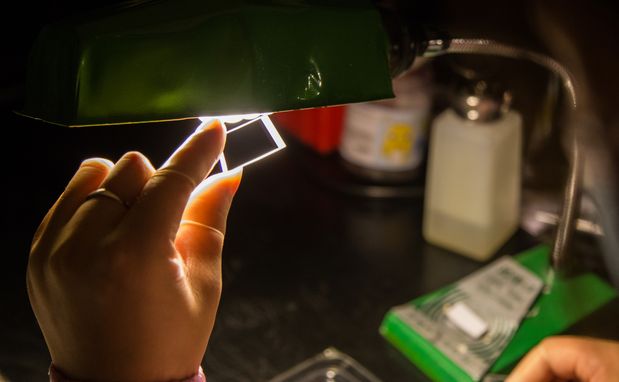
Surface Quality Inspection
The inherent inspector-to-inspector and vendor-to-customer variability makes it difficult to correlate scratch-dig between them. While some companies try to correlate with aspects of their customers’ inspection methods (i.e., lighting, viewing the part in reflection vs. transmission, distance, etc.), many more manufacturers avoid this pitfall by overinspecting their products by one and sometimes two levels of scratch-dig better than the customer has specified.
Quantity
For the most part, the smaller the quantity, the higher the processing costs per piece and vice versa. Quantities too low may involve lot charges, as a group of components may need to be processed to properly fill and balance the machine to achieve the desired specifications. The goal is to maximize each production run to amortize processing costs over the largest quantity possible.
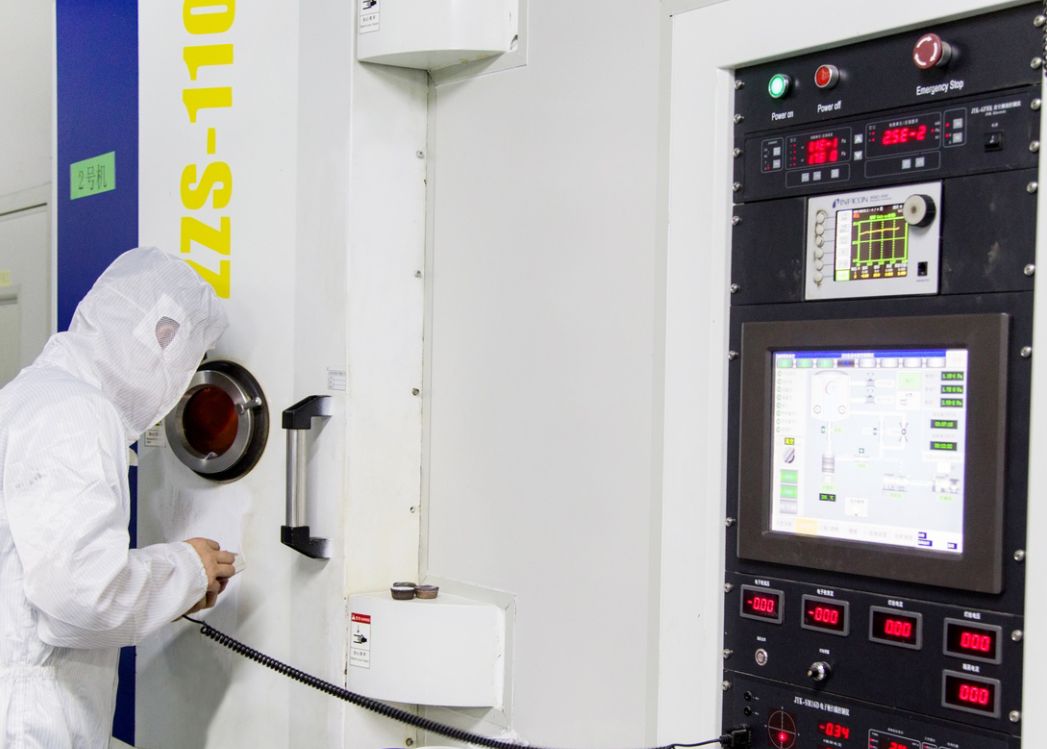
A coating machine.
Pitch polishing, is a more time-consuming process generally utilized for requirements specifying fractional wave surface flatness and/or improved surface roughness. Double-sided polishing is deterministic, involving hours, while pitch polishing may involve days for the same quantity of parts.
If transmitted wavefront and/or total thickness variation are your primary specifications, double-sided polishing is best, whereas polishing on pitch polishers is ideal if reflected wavefront is of primary importance.
Post time: Apr-21-2023
